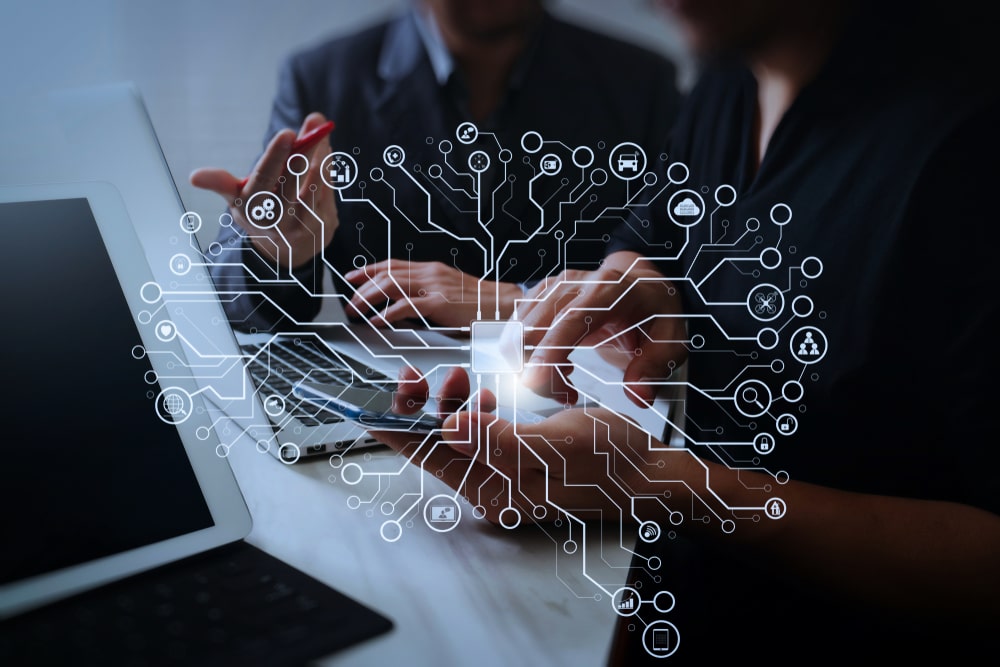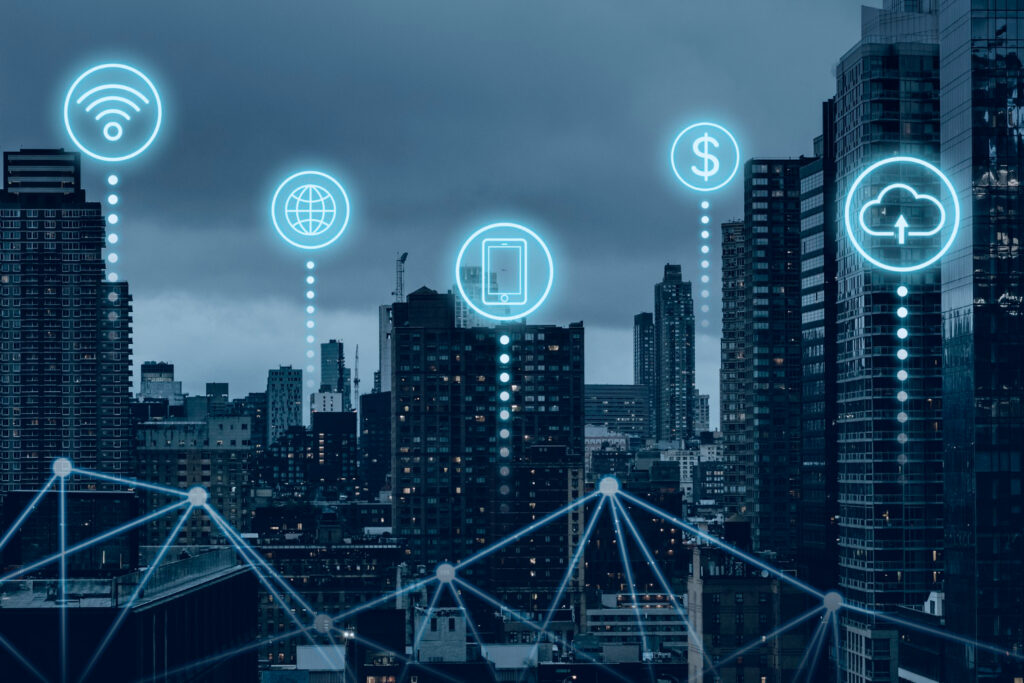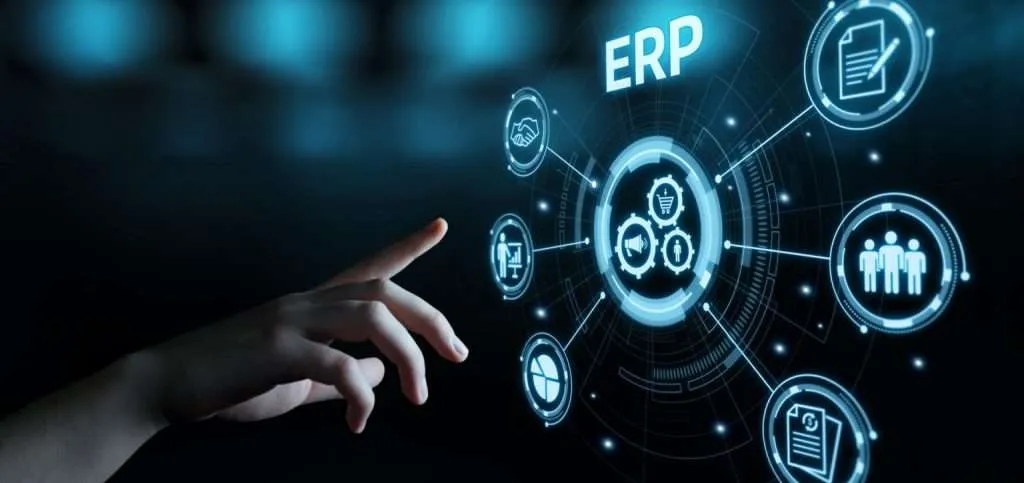The IoT full form “Internet of things” is a technological revolution which is paving out new ways of communication and computing. Moving the virtual world to the next age of computing, soon you will be computing out of any gadget. This will be made possible with radio frequency identification and sensor network technology. RFID will be embedding these communication networks in the environment anytime.
IoT has ushered in a new world of business automation all across the globe. Its inbuilt ability to connect remote machines and humans has greatly facilitated the business. It has not just helped various organizations to expand their horizons but has also helped them out to get reach across geographical boundaries.
With the upsurge of the IoT paradigm, there was a tremendous makeshift in how these intellect devices could assist in achieving any particular goal. Enterprise resource planning has been a major area where thorough management is needed to keep the functions in pace. But, enterprise resource planning ERP tools has been limited as all the data was managed within the enterprise’s premises. However, the trending application of IoT will be of great assistance if brought into the world of ERP. Experts too believe ERP systems and IoT integration is a must for the businesses.
Companies while working, have to collect various forms of data which include invoices, customer-related information, project schedules, inventory capacity and many others. ERP system greatly helps the management to streamline all these information and processes to improve business efficiency.
So just imagine bringing IoT and ERP together.
As per research, an organization which have IoT-enabled ERP has noticed an entire shift in the work place environment. There are various ERP and IoT examples which have made this integration worthy. It has not just improved human productivity but has also added enough to profitability. ERP and IoT have also helped organization cut down their expenses and manage their waste. It would be difficult to summarize it all into figures since global leaders have already been convinced with the IoT-aided ERP.
So, let’s get started with ERP and IoT integration.
History Of ERP and IoT
We are aware of the fact that ERP integrates crucial business processes. It includes manufacturing, distribution, finance, human resources management, inventory management, and logistics. This integration greatly assists the management to look at the entire organization as one unit and making useful decisions with the information drawn by ERP.
For decades, ERP software has been using main-frame computer technologies including data warehousing, data mining, and client-server networks with distributed database and knowledge management. From the 20th century, we saw low-end IoT technologies being used in the ERP world.
Initially, the systems of ERP were very limited and small and they were deployed to perform limited functions. But with the advent of new technologies, the companies felt a need of optimizing ERP with new technologies. In addition to this, small systems of ERP need a large of integration and communication with other servers. This means the system has to cope with a large amount of traffic that comes with additional risks which include cyber threats. So, there was a need for something which won’t only make things easier and advance with no human intervention but also be trustworthy.
So there came the Internet of things to the ERP world, and since then it has been setting new trends.
Basic Elements of IoT Environment
To use IoT to the best of our interest, we should be aware of the elements that make up the IoT world. A basic IoT environment constitutes the following elements
- Identifiers
Identifiers are responsible to add an explicit identity to each object. Two important terms come with identification: naming and addressing. The name refers to the title of the object while addressing refers to the object’s address. Two objects might have the same name but they are very unique and distinctive.
- Sensing devices
IoT sensor collects information from the environment and transfers that information to the local, remote or cloud-based database. You can easily identify these sensing devices or actuators.
- Communication device
IoT communication devices precisely communicated heterogeneous artefacts. IoT environment facilitates the connection and safe communication of various devices over the internet. The process of communication is further aided by Bluetooth, NFC, LTE and RFID.
- Computation devices
Compute devices process the IoT-collected information using different software. compute devices include both hardware ad software platforms. The operating systems mostly used include Lite OS, Android, Riot OS and Tiny OS.
- Semantics
It is the brain of IoT technology. It gathers all the information and helps to conclude useful and appropriate decisions.
Benefits of IoT and ERP Integration
The semantic web of IoT will be of great help in collecting and processing information collected by the ERP systems. IoT and ERP integration comes with following advantages:
- IoT and ERP integration will help in automating the scheduling of events such as reorder, out-of-stock inventories and replenishment. It will also automatically inform the missed deliveries through sensors.
- IoT will help the ERP system to gather optimum and relevant information to analyze and get maximum output. IoT and ERP can easily cater to large data collected from different sources which wouldn’t have been possible for individual use.
- IoT-ERP blend will initiate warning messages to the manufacturers regarding their faulty or need-to-improve products before they get delivered to the end user.
- The integration of ERP and IoT paves the way for real-time data and immediate solutions at the same time; this is possible through ERP, which provides a clear understanding of the situation while IoT offers the potential solutions. IoT will create junk information that ERP can extract in an attempt to improve the business.
- The sensors installed in IoT devices would also prevent information theft. Any unauthorized access to the organization’s ERP system and you will get an intimation of it.
- Products which need special care and maintenance are being robotically administered via IoT devices. This not only assures their automated maintenance but also prevents the risks associated with them without informing the humans.
- Traditional ERP systems were not capable to gauge the quality of a product until the customer receives it and write a review. But not IoT nor ERP integration has made things easier. Now you can not only check the status of your product but can also measure its cost, quantity available and its use.
- Automation scan and the Bar code of each item have further helped differentiate and track each item easily.
IoT Transforming ERP and Business Processes
Internet of things has successfully replaced the mainstream and those traditional practices of ERP.
The order-to-cash process is where the customer places an order or makes a quote for the desired product. Previously, this process took a while to place the order and for delivery. But now ERP automation with IoT device, the customer can initiate the quote from whatever source and the manufacturer will directly receive that order . The need specified in the customer quote is then processed via computing devices and the 3D printer will allocate all the resources needed for it without human intervention.
Many known manufacturing firms have already shifted to this customer-oriented and automated integration of ERP with the real-time world. IoT devices will not only help in creating, and analyzing the data but will also help streamline and track them whenever needed.
Frequently Asked Questions
What does ERP stands for?
For the newbies, it might be something new. ERP software stands for “Enterprise Resource Planning”.
What is ERP example?
The best implementation of ERP software is in supply chain management. ERP system might automatically do a financial analysis and forecast future stock requirements in the supply chain industry to maintain a healthy level of inventory. This process control makes sure that the manufacturing department is operating at maximum efficiency and that popular items are available.
Is ERP a part of IoT?
Not exactly. They are two different technologies which on combination will be able to bring revolutionary changes in industrial world. By integrating ERP and IoT, all parties engaged in the supply chain may keep informed and take appropriate action. This information is automatically fed into the ERP system.
What ERP system is used by Amazon?
For its business operations, Amazon has been employing SAP as its ERP system.


